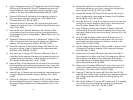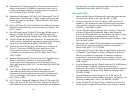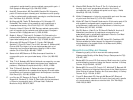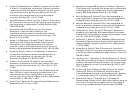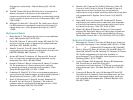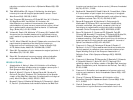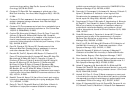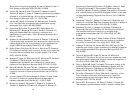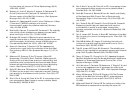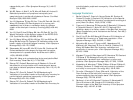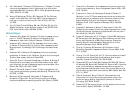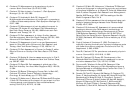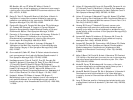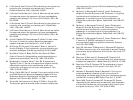
59
9. Uki J, Mendoza T, Cleeland CS, Nakamura Y, Takeda F. A brief
cancer pain assessment tool in Japanese: the utility of the
Japanese Brief Pain Inventory--BPI-J. J Pain Symptom Manage
16(6): 364-373, 12/1998.
10. Wang XS, Mendoza TR, Gao SZ, Cleeland CS. The Chinese
version of the Brief Pain Inventory (BPI-C): its development
and use in a study of cancer pain. Pain 67(2-3): 407-416,
10/1996.
11. Yun YH, Park YS, Lee ES, Bang SM, Heo DS, Park SY, You CH,
West K. Validation of the Korean version of the EORTC QLQ-
C30. Qual Life Res 13(4): 863-868, 5/2004.
Methods Papers
1. Anderson KO, Syrjala KL, Cleeland CS. How to assess cancer
pain. In: Turk DC, Melzack R, editors. Handbook of Pain
Assessment. New York: Guilford Press; pp. 579-600, 2001.
2. Anderson KO, Cleeland CS. The assessment of cancer pain.
In: Bruera E, Portenoy RK, eds. Cancer Pain: Assessment and
Management. Cambridge, UK: Cambridge University Press;
2003.
3. Anderson KO, Cleeland CS. Assessment of cancer-related
symptoms. In: Nelson K, ed. Palliative Care for the Oncologist.
Totowa, New Jersey: Humana Press; 2003.
4. Auret KA, Toye C, Goucke R, Kristjanson LJ, Bruce D, Schug S.
Development and testing of a modified version of the brief
pain inventory for use in residential aged care facilities. J Am
Geriatr Soc 56(2): 301-306, 2/2008.
5. Barlesi F, Picard M, Astoul P, Villani P. [Pain management of
lung cancer patients by general practitioners]. Therapie 61(6):
501-505, 11/2006.
6. Broderick JE, Schwartz JE, Vikingstad G, Pribbernow M,
Grossman S, Stone AA. The accuracy of pain and fatigue
items across different reporting periods. Pain [Epub], 4/2008.
60
7. Caraceni A. Evaluation and assessment of cancer pain and
cancer pain treatment. Acta Anaesthesiol Scand 45(9): 1067-
1075, 10/2001.
8. Caraceni A, Cherny N, Fainsinger R, Kaasa S, Poulain P,
Radbruch L, de CF. Pain measurement tools and methods in
clinical research in palliative care: recommendations of an
Expert Working Group of the European Association of
Palliative Care. J Pain Symptom Manage 23(3): 239-255,
3/2002.
9. Casarett D, Karlawish J, Sankar P, Hirschman K, Asch DA.
Designing pain research from the patient's perspective: what
trial end points are important to patients with chronic pain?
Pain Med 2(4): 309-316, 12/2001.
10. Castel LD, Abernethy AP, Li Y, Depuy V, Saville BR, Hartmann
KE. Hazards for Pain Severity and Pain Interference with Daily
Living, with Exploration of Brief Pain Inventory Cutpoints,
Among Women with Metastatic Breast Cancer. J Pain
Symptom Manage 34(4): 380-92, 6/2007.
11. Chang VT, Hwang SS, Feuerman M. Validation of the
Edmonton Symptom Assessment Scale. Cancer 88(9): 2164-
2171, 5/2000.
12. Chang Y, Lin YP, Chang HJ, Lin CC. Cancer patient and staff
ratings of caring behaviors: relationship to level of pain
intensity. Cancer Nurs 28(5): 331-339, 9/2005.
13. Chelminski PR, Ives TJ, Felix KM, Prakken SD, Miller TM, Perhac
JS, Malone RM, Bryant ME, DeWalt DA, Pignone MP. A primary
care, multi-disciplinary disease management program for
opioid-treated patients with chronic non-cancer pain and a
high burden of psychiatric comorbidity. BMC Health Serv Res
5(1): 3, 1/2005.
14. Clark K, Greaves J, Sung E, Glare P. Development and
introduction of a pain score documentation chart in the
acute oncology setting. Asia-Pacific Journal of Clinical
Oncology 3(2): 89-94, 6/2007.
15. Cleeland CS. The impact of pain on the patient with cancer.
Cancer 54(11 Suppl): 2635-2641, 12/1984.



